#fully forgot to schedule/publish this whoops
Explore tagged Tumblr posts
Text
Recreation
Coming together it is easier to work after our bodies meet paper and pen neither care nor profit whether we write or not but as your body moves under my hands charged and waiting we cut the leash you create me against your thighs hilly with images moving through our word countries my body writes into your flesh the poem you make of me.
Touching you I catch midnight as moon fires set in my throat I love you flesh into blossom I made you and take you made into me.
Audre Lorde
#it's national poetry month!!!#audre lorde#recreation#poetry#fully forgot to schedule/publish this whoops#anyway audre is the GOAT for sure#reading this poem makes me feel like she's railing me#in the best way#you create me against your thighs / hilly with images / moving through our word countries#like excuse me ma'am#have mercy 🥵
8 notes
·
View notes
Text
Livin' La Vida Locomotive
I'm not sure why I expected Ecuador to be a bit less developed than Peru, but I did and it isn't. The niceness of Baños wasn't an anomaly, which has been handy considering we'd discussed treating this month as more of a holiday. For our wedding anniversary we treated each other to some time apart and I went off to investigate the eponymous thermal baths of Baños. I jest of course, but the longest we've been out of each other's sight in nine months was just under four hours when I climbed Sydney Harbour Bridge. This is not natural by anyone's standards.
For those of you who've had the pleasure of visiting the Thermae Spa in Bath, you need to clear your mind of that image. Baños baths are an altogether more basic proposition of four outdoor pools: one clear and cold, and three murky ones at the Goldiloocks temperatures of tepid, hot and cauldron. The hot water comes courtesy of the nearby volcano Tungurahua, while the cold water arrives direct from the waterfall above. $3 gets you an entry ticket and compulsory natty pink swim hat, but no instructions. I stared cluelessly at the watery chaos for a minute, a symphony of concrete cancer and trip hazards, before throwing my things in a crate and finding what seemed to be the right place to leave them. I also stared at the hole on the lower level, empty save for a woman with a broom. One of the pools was closed, but which one? Getting to work with the remaining three I soon rejected the tepid pool as it was essentially children soup. I'd been looking forward to the challenge of the cauldron, but of course it was that one that was closed. That left me with cold and hot, so I concentrated on maximising the difference. In addition to the cold pool were a set of cascade showers fed from a pipe inserted into the waterfall. Most of the locals were avoiding the cold water completely, or tricking each other into standing under it and laughing at the screams. As the only gringo woman in the place I was pretty conspicuous as the person who actually seemed to enjoy the freezing inundation. After a couple of hours I was fully pruned up and couldn't justify waiting another two hours for the super hot pool to fill. I squelched back in the drizzle to make myself presentable.
We had a look at the museum attached to the cathedral, which featured a great display of pre-Colombian pieces, some unbrilliant art, the extensive wardrobe of the local Virgen figurine, and a hilariously creepy room full of taxidermy, religious art, toy vehicles and typewriters. I never need to see the stations of the cross juxtaposed with poorly stuffed pumas ever again. In keeping with the Alpine flavour of the area, we went for dinner at a Swiss restaurant, where I promptly mixed up stroganoff and goulash and ordered the wrong dinner. What a numpty.
Another emerging feature of Ecuador has been the predictable and efficient bus system. Everything's clearly marked and they leave on time. Most of the long distance buses, regardless of the operator, cost about $1-1.5 per hour so you can have a reasonable guess as to when you're going to arrive. With Ecuador being a compact gem of a country, there weren't going to be any arduous legs. Two or three hours up the road was Riobamba. We were due to stay a couple of nights in order to play on the restored train line. What our guidebook failed to mention was that since it was published, they've changed the schedules and the daily train now runs from a town two hours further away. Whoops. We had no trouble entertaining ourselves in Riobamba and had a well timed visit to the city museum and gallery, while an orchestra rehearsed below. Having not heard any orchestral music since Australia, the sound brought a grin to my face and a tear to my eye. The snowy peak of volcano Chimborazo emerged from its cloud shrouds to loom in proprietary fashion over the city. Back at our hostal, the owners' confident small daughter assailed us with an incomprehensible monologue and barrage of questions and/or instructions that we were incapable of responding to. Bored of rearranging piles of unread Gideon bibles among the pot plants and fed up with my refusal to biro in them on command, she hid our room key and hit us both on the head with a stick. Highly entertaining but nevertheless a great reminder of why we don't have kids.
Alausi is a little town with a big claim to railway fame. Halfway down the newly restored Quito to Guayaquil line, it sits above La Nariz del Diablo (The Devil's Nose). I'm very partial to an epic train journey, and what this lacked in length it certainly made up for in engineering and sheer bloody-mindedness. Around two thousand men died to create 12kms of switchback track, descending an 800m rock face. We arrived in town and were most joyful to find that the train tracks ran up the middle of the street we were staying on. A couple of hours later and we were ensconced in a classic wooden carriage, slowly making our way down a cliff. My camera chose this moment to start malfunctioning with a blank screen, leaving me pressing the button and hoping for the best. As this is basically the extent of my photographic skill anyway, it didn't make a great deal of difference to the results. At the bottom was a little station with retail opportunities and a couple of horses and llamas to be used as photo props. The horses looked very much over it, but the llamas had some spirit left and concentrated on being noncompliant. We hid from the souvenir frenzy, but I got drawn in when the traditional dance display took a turn for the interactive. James stayed safely on the side-lines, in charge of incriminating pictures. Back in Alausi we checked into our lodgings and discovered that even the glowing reviews had not prepared us for how nice a hostal it was. Brand new contemporary styling, spotlessly clean, delicious breakfast, and with a massive comfy bed. I immediately declared that I was to be transported around Ecuador in said bed from then on, and it was with some regret that we moved on after one night. Rough calculations told us we had time to get to everywhere we wanted to see, but only if we kept rolling.
The route to the city of Cuenca assailed us with more handsome scenery than is seemly, scrolling down in scale through Alpine, Scottish Highlands, and Lake District. In a clear contrast to previous countries we've visited, there don't seem to be Inca-style terraces here. No matter how steep, the fields follow the line of the hills and are separated by shrubs or trees. The result is a verdant cornucopia of produce and a very different look to the countryside. The southern city of Cuenca was elegant and cultured, and we'd hoped our hostal with integral bar-restaurant would make for a lively weekend base. The hitch in this otherwise sound plan was the profoundly intrusive noise bleeding into all the bedrooms. We were prepared for the late night music, and indeed made good use of happy hour and the tasty menu on offer. What was less manageable was the 6am pounding rock wake up call. I shambled, incredulous, into the restaurant area to find the source was actually next door. A staff member told me with a shrug that their neighbour did it every day. And he did. Clearly there was some beef going on, resulting in the hostal guests being tortured with a sleep deprivation spit roasting. On the second night we coped by playing our own loud music which worked really well and still couldn’t be heard by the other guests over the general din. There is music everywhere in Ecuador, but the ‘80's and ‘90's pop and rock fetish of the rest of South America is not such a thing here. As such I have had withdrawal symptoms from the tracks we've heard most days since May, and James kindly downloaded Alphaville’s ‘Big In Japan’ to help with my DTs. I invite you to join me in my obsessive earworm: https://youtu.be/tl6u2NASUzU. Five hour sleep window notwithstanding, Cuenca itself lived up to its Unesco hype with beautiful colonial architecture, galleries and museums. A riverside walk took us further out to the suburbs. Cuenca was clearly one of the wealthiest places we'd been in months, as suggested by the number of aesthetic dentists, gyms and plush interior design studios. Strikingly as we left, our bus drove for miles before we saw anything like the simple breeze block and wood homes we've been accustomed to seeing.
Our flying visit to Ecuador's second city, Guayaquil, was achieved thanks to a stunning bus trip up and over the Parque Nacional Cajas. Sat on the continental divide with roads winding up over 4300m the first couple of hours was textbook glaciated landscapes of u-shaped valleys and interconnected lakes. My geography teachers might have despaired at my sixth-form attendance rate, but they did instil an absolute love of this stuff. Pine trees and eucalypts gave way to a tight, spongy carpet of mosses and tough grasses as we ascended into the clouds. With ears popping, our water filter bottles leaking under the pressure strain, and the inevitable altitude cough, I tried to make a mental note to be ginger with my deodorant. Every time we do this I forget, and end up with an unfortunate looking cream explosion in my armpit the first time I dislodge the roller ball. I forgot yet again of course, because travelling turns you into an in-the-moment goldfish brain. A brief stop at the top with the mists rolling and burning off in the ravines below allowed the poor bus a bit of a breather. Heading off again, we must have passed through some magic geography portal as we were straight into lush cloud forest. A great deal of down was followed quite suddenly by dead flat as we proceeded across to the coast. Acre upon acre of cacao, banana and pineapple plantations baked in the sun.
Guayaquil itself was a thriving, sprawling port city and we had one and a half days to get acquainted. We focused our efforts on a park full of iguanas, the expansive riverside promenade, the excellent free museums and galleries, and a pretty hillside neighbourhood topped with a stripy lighthouse. Our cheap as chips flophouse next to a main road was still quieter than the aesthetically pleasing but acoustically offensive hostal we'd had in Cuenca. The modern art gallery had an extensive ethnographic section and we became mesmerised by a documentary about a group of men who sailed from Ecuador to Australia on traditional balsa wood rafts. We sat there for over an hour, prompting a security guard to come looking for their missing in action visitors. When you essentially don't have anywhere to live, there's a risk of being in constant motion. Just sitting in a quiet place, and getting immersed in something can be a real treat. Guayaquil was our gateway to the beach, so off we went again. The scenery may have been unprepossessing barren-looking sand and gravel, but it showcased the quality of the highway. Uniquely among the South American countries we've visited, across Ecuador there are subtle hints of coherent government planning and investment. From the ubiquitous rainbow branding onwards, there is a feeling of continuity despite the radically different terrains of the forest, mountains and coast. The excellent road and bridge system is one of the most obvious indicators of massive infrastructure spending, but it's also there in the schools, healthcare facilities, emergency services provision, free museums and public spaces. It seems to connect the country without homogenising. It feels lovely to visit, and I hope that translates into the experience of actually living here as Ecuador recovers from the financial troubles of the recent past.
The highway wasted no time delivering us to tiny Oloncito. Unlike most of the Pacific coast of South America, Ecuador is blessed with inviting sandy beaches so this was the first opportunity for a sea swim in four months. I say swim, but the water was really more suited to surfers, so jumping around trying not to get knocked flat by waves is probably a more apt description. Our hostal was one of those quirky labours of love, set in a tropical garden with lots of knick-knacks, hammocks, great carpentry, and inventive use of concrete. Unusually, the building we were staying in was complete, but more typically one of the others was a work in progress and another had been left with the classic concrete uprights and sprouting steel reinforcements look. Imagined but never realised upper floors are the quintessential South American building practice. We were the sole guests, which suited us just fine. Down with another cold, I took the opportunity of spending a day with nothing more pressing to do but nap. Suitably rested, we spent the next day walking on the beach, chaperoned by the resident dog Dixie. Like most of the numerous dogs in these parts, Dixie was nominally owned but free to do as he pleased. What pleased Dixie was accompanying guests wherever they went, so he'd been for lunch at a beach cabaña, showed us round Olon, and now came miles up the beach. Dixie busied himself inspecting all the corpses of huge sea birds, puffer fish, and a big turtle. Nervy orange crabs scattered as we approached, flitting into holes in the sand. We turned round as the tide reached the top of the beach, and Dixie spent the return journey accelerating wildly into the surf chasing birds. I don't spend much time with dogs and am not generally a fan, but it was a great pleasure and entertainment to be in Dixie's company. Fully in holiday mode we committed the evening to good food and sangria.
Our nine month travelling anniversary saw us reluctantly crowbarring ourselves out of Oloncito and moving a not too challenging hour up the road to Puerto Lopez. Having found our brick and bamboo hut at the northern end of the tourist town, we alighted upon a seafood restaurant for lunch. Said restaurant had a resident floofy cat and we required little persuasion (read none) to share our laps and food. I have no poker face when it comes to cats anyway, but my desperation for mog company is utterly shameless now. Puerto Lopez was well stocked with felines so there was plenty of chances for a fuss. The sea off Puerto Lopez was well stocked with whales, another fluky bit of timing on our part. The obligatory boaty day trip took us out to sea and for a visit to Isla de la Plata. We'd been given a 100% guarantee of seeing whales, which boded well, but we tried to manage our expectations. An hour off the coast and there were humpback whales everywhere. The helm did a great job of manoeuvring into good positions so we could watch these magnificent creatures sliding through the water. I'm not sure you'd ever tire of whale tail salutes. Moving on, we visited the island for a couple of hours hiking and bird watching for nesting blue-footed boobies and frigate birds. I'm not sure you'd ever tire of the amusement of hearing the word ‘boobies' repeatedly. The birds were entirely unfazed by the visitors admiring their big turquoise feet and fluffy chicks. Turtles had surrounded the boat when we arrived, and afterwards we went round to a bay for snorkelling and general coral and fish wonderment.
Much as it would have been nice to tarry by the sea, we bid our final farewell to the Pacific and embarked on a ten hour, three bus slog into the mountains. Although a long day, it all went very smoothly and we had the entertainment of passing through the marvellously named Jipijapa on the way. It was only over the last couple of hours that we gained altitude, but once the climb began it did not muck about. Sunset found us above the clouds, like a duvet of pink candy floss, before the bus picked its way across to Zumbahua in the dark. Chucked off on the highway, we zig-zagged down into the almost deserted town and found a bed for the night on the square. Finding any tea was a little tricky as the only clearly advertised restaurant wasn't serving. Next door, in what looked like someone's tiny front room were four tables and a lady serving a great value set menu. Starving, we gratefully dug into the soup, chicken and refreshing chicha morada (purple corn drink) before heading to bed. Morning revealed Zumbahua to be no more busy by day, but we found a corner cafe where another lovely indigenous lady conjured up everything she had on offer for breakfast: pastries, chicken and rice, boiled eggs, juice, tea and coffee. It was a good job she did, as it would be twelve hours before we had anything else.
Zumbahua sits on what is known as the Quilotoa Loop, a multi-day Andean hiking route. Quilotoa itself is a volcano and while we were too time strapped for the full loop, we were keen to visit there. Waddling away from breakfast we caught a lift up the road. Quilotoa village appeared to have had a very recent and very comprehensive redevelopment, resulting in something of a The Prisoner does Middle Earth vibe. There was little going on, which served to heighten the undeniable presence of the rim. Picking our way in slightly the wrong direction through a stony car park and building site, we found the main viewing area. It was, exactly as advertised yet still difficult to believe, a ruddy great volcano crater lake. So we stood there admiring it, both starting to wonder what else we were going to do with our day. Well there was a path...and maybe we could walk round the rim for a bit...and well we're at least a third of the way round now and that high bit over there looks just about manageable...
Seven hours later we were chasing the sunset back into Quilotoa, James just about still with a spring in his step, and I with legs of jelly and lead. Sometimes you really question your own sanity. Our circumnavigation had been quite a scramble round the narrow ridge, on a path primarily featuring powdered granite. Asthma plus my latest cold did me no favours whatever, and we realised part way round that this was the highest elevation yet that we’d done vigorous exercise at. The high bit reliably informed us it was 3930m, which I appreciated from my position sprawled on the ground under the sign. You certainly value your views when you've worked for them. Vast rolling mountain landscape surrounded us, striped with fields and rent with canyons. Vibrant flowers, grasses and heather-like shrubs softened the vertiginous drops on both sides. Intermittent clouds behaved themselves but painted the lake a steely emerald. Pine and the woody scent of burned stubble filled the air around the crunchy path. Given that my dodgy knees make me less mountain goat and more Professor Yaffle on slopes, it wasn't the most elegant or proficient descent. Content that we had done the volcano justice, we negotiated a lift back to Zumbahua, squished in the front seat of a pickup. Evidently, Tuesday nights in Zumbahua are even quieter than Mondays, so we had to content ourselves with a beer, then crisps and chocolate for dinner, from one of the very local local shops.
A chilly, sunny day greeted us as we exited our guesthouse the next morning. A sheep trotted across the deserted square. We eschewed the chance of fried fish for breakfast and went straight up to the highway to wait for the bus. The bus was already there so it all proved mightily efficient. A couple more hours of gorgeous mountain scenes, with occasional llama spottings and a good workout for the brakes, and we were down in Latacunga. There was no particular reason for us to visit this city near Cotapaxi volcano, but it seemed like a sensible stop on route to the north. We found somewhere to stay and were pleasantly surprised to be overlooking the main square. The rest of the day involved eating and TV, which was just what was required. Evening entertainment came courtesy of an aerobics flashmob in the square, and the sight of a group of nuns enjoying a night out at the pizzeria, sitting below a large poster of the Vatican.
We bid farewell to Latacunga and set off for Mindo, a journey involving a bus to Quito, traversing the length of the capital from southern to northern bus terminals, and then another bus. Cloud cover blocked the potential view of Cotapaxi as we sped through the self-explanatory Volcano Alley. Quito snuck up quickly, but due to it's position in a twisty valley, there was no big reveal moment. The southern bus terminal was all gleaming airport-style modernity as we transited through to one of the cross-city bendy buses. Warnings about crowding and theft risk came to naught and we made it two thirds of the way up town before being turfed off and directed to another stop on a different line. Arriving at the northern terminal we needed, we were feeling pretty smug about being in time for the one o'clock bus to Mindo. The lady selling tickets, however, was not so confident. Our transactional Spanish has developed to the point where we can ask for things, which is fine as long as those things are available and the person doesn't really have to say anything to us in response. This was not one of those times. The one o'clock wasn't going to happen, but we had no idea why. Baffled by my blank face, the woman borrowed my phrasebook and managed “the way is closed”. This wasn't particularly enlightening so I gave up and had a grumpy, helpless sit down. James successfully procured tickets for the four o'clock and we sat for three and a half hours, contemplating the meaning of her gnomic proclamation. Later, sitting in traffic so bad that the driver turned off the engine and got out of the bus, we had some idea of what she might have referred to. As we were just five hundred metres short of the equator, James posited that there had probably been a pile-up caused as all the vehicles turned the right way up for the northern hemisphere. We never did figure it out, but the road cleared, we took our latitude screenshots and the bus clambered off into the cloud forest in the failing light. It would have been a beautiful journey...on the one o'clock bus. Four hours later than expected, and after James narrowly avoided starting a barney with a nun as we tried to get off the bus, a nice cold beer was the only way to say hello to Mindo.
The morning brought hummingbirds and a large group of young Americans to our hostal. There's nothing like vocal fry grating around a hammock attic to cut through a lie-in. The hummingbirds however, were delightful, flitting and chirruping around. In the light of day, Mindo was revealed as a pretty little hippy town sitting in a bowl of forested hills. With only one road out, all other paved thoroughfares ended abruptly in trees, and were liberally decorated with snoozing dogs. We had a nice lazy day pottering around and avoiding the inevitable cloud forest rain. When choosing our accommodation we’d narrowed it down to two, both the same sort of price, and both with resident cats mentioned in the reviews (I told you it was bad), but plumped for the one with the great chill out area. The cat, a spirited little ginger, appeared when it rained and stood on my shoulders for a few minutes when I picked it up. The hostal owners didn't know what its name was or even if it had one, so we really weren't sure who had adopted who. We had vowed to be more active the next day, so set off in a cab up the mountain to the tarabita cable car. The cable car involved an open cage powered by a car engine. This led into a series of gorges full of prehistoric-looking plants, and waterfalls where you were encouraged to swim. An hour of steep forest paths later and we were at the top of a flight of waterfalls. James waited patiently as I insisted in swimming in each one on the way down. I became more soggy, dishevelled and excitable, until we ran out of waterfalls and hiked up to the cable car and back down the mountain. Needing to secure bus tickets for the next day, we went back via the high street, which involved passing the other hostal we'd considered. Surely we wouldn't happen upon Felipe, cat of Booking.com review fame. Of course we would! Felipe turned out to be a super-sociable ginger who fairly demanded a through belly rub. Mindo was full of cats, including at one of the general stores where we spied one nestled among the bananas. After a thorough shower, Saturday night proceeded in pizza and cocktails fashion.
Despite the excellent distracting cat action, we had managed to procure bus tickets, so it was off to Otavalo via the bus stations of northern Quito. Sunday traffic made this pleasingly straightforward and we were quickly through the city and heading north across the equator again. The seemingly brand new highway entered a huge, complicated valley which had been carved up and sprayed with more concrete than I've ever seen. The engineering involved was both shocking and impressive. We wound through the crumbly, cactus strewn mountains, chased by angry clouds and beat the rain to Otavalo. And here we are, in a third floor corner room with full on volcano panorama view. We've seen and done so much in Ecuador that it's exhausting just trying to remember it all. Only two weeks left now. We've gotta keep on keepin’ on!
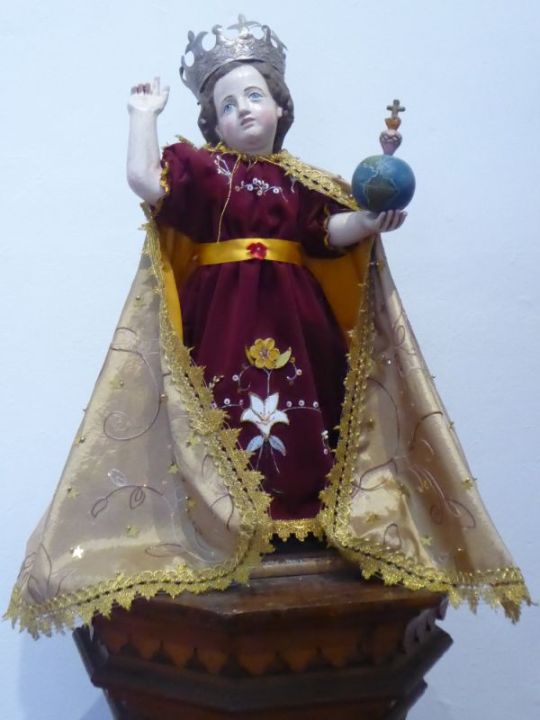
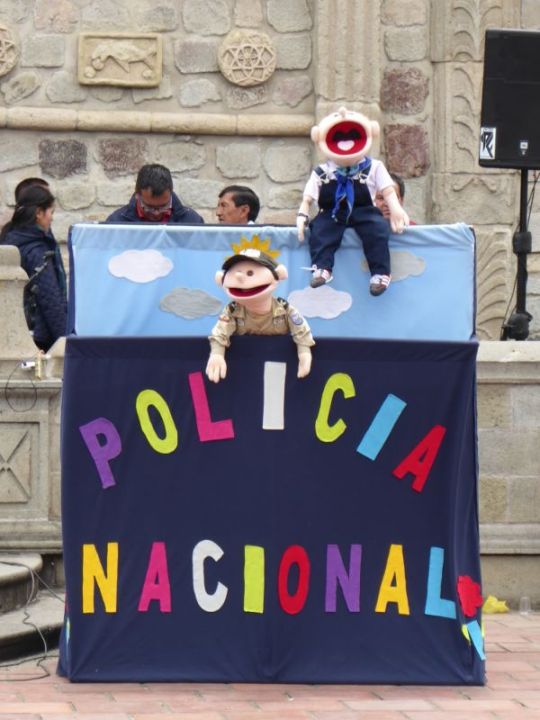
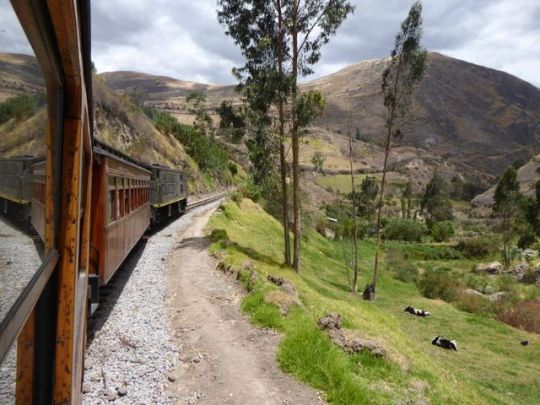
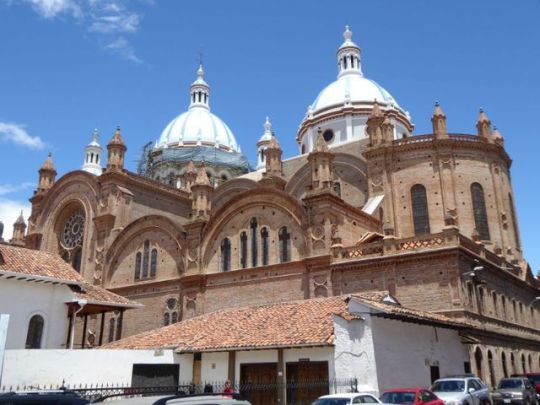
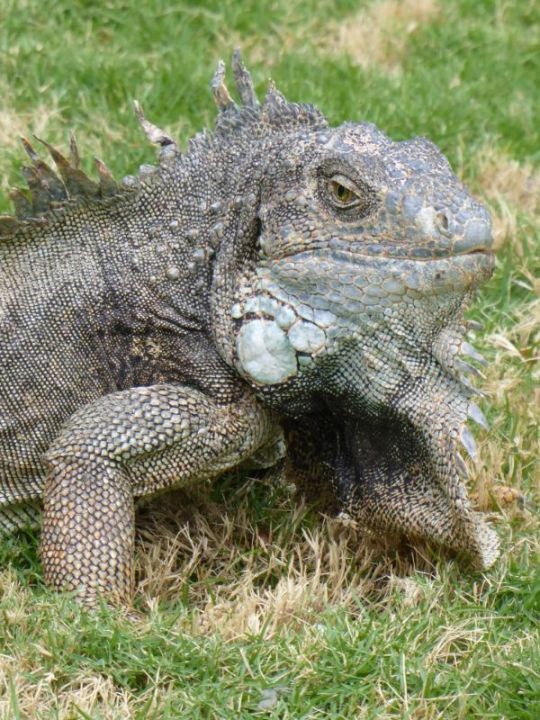
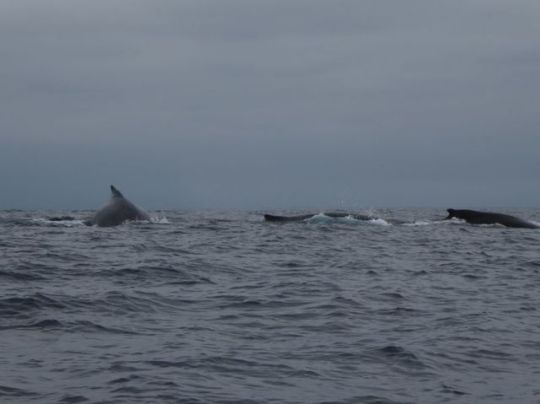
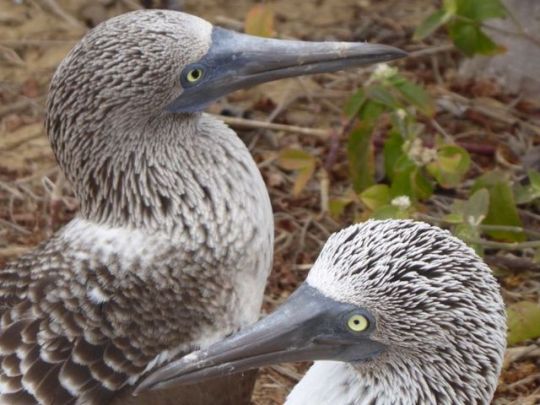

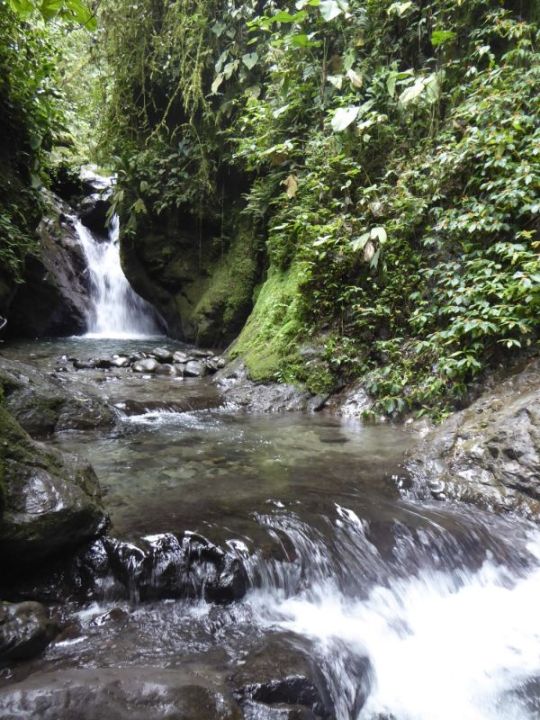
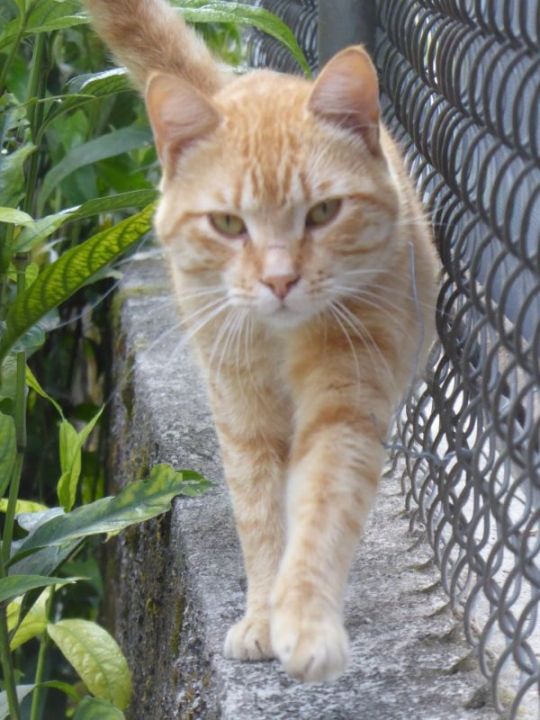
0 notes